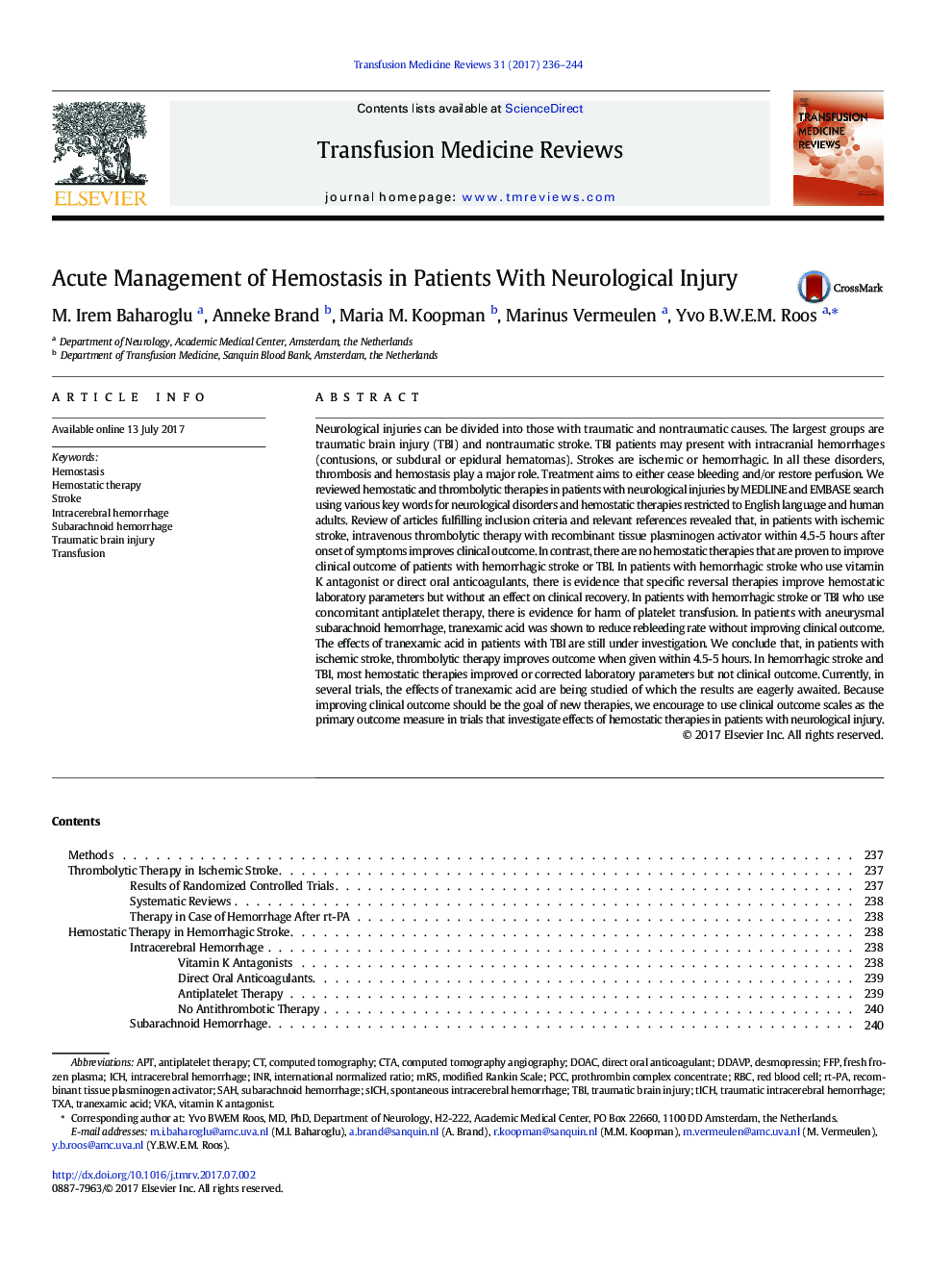| Article ID | Journal | Published Year | Pages | File Type |
|---|---|---|---|---|
| 5664770 | Transfusion Medicine Reviews | 2017 | 9 Pages |
â¢Ischemic stroke should be treated with intravenous thrombolysis <4.5-5 hours.â¢Reversal therapies exist for hemorrhagic stroke associated with VKA and DOAC use.â¢There is no evidence for effectiveness of any of these therapies on clinical outcome.â¢There is evidence of harm of platelet transfusion in antiplatelet therapy-associated injury.â¢Currently, there is no evidence of effectiveness of any other hemostatic therapies.
Neurological injuries can be divided into those with traumatic and nontraumatic causes. The largest groups are traumatic brain injury (TBI) and nontraumatic stroke. TBI patients may present with intracranial hemorrhages (contusions, or subdural or epidural hematomas). Strokes are ischemic or hemorrhagic. In all these disorders, thrombosis and hemostasis play a major role. Treatment aims to either cease bleeding and/or restore perfusion. We reviewed hemostatic and thrombolytic therapies in patients with neurological injuries by MEDLINE and EMBASE search using various key words for neurological disorders and hemostatic therapies restricted to English language and human adults. Review of articles fulfilling inclusion criteria and relevant references revealed that, in patients with ischemic stroke, intravenous thrombolytic therapy with recombinant tissue plasminogen activator within 4.5-5 hours after onset of symptoms improves clinical outcome. In contrast, there are no hemostatic therapies that are proven to improve clinical outcome of patients with hemorrhagic stroke or TBI. In patients with hemorrhagic stroke who use vitamin K antagonist or direct oral anticoagulants, there is evidence that specific reversal therapies improve hemostatic laboratory parameters but without an effect on clinical recovery. In patients with hemorrhagic stroke or TBI who use concomitant antiplatelet therapy, there is evidence for harm of platelet transfusion. In patients with aneurysmal subarachnoid hemorrhage, tranexamic acid was shown to reduce rebleeding rate without improving clinical outcome. The effects of tranexamic acid in patients with TBI are still under investigation. We conclude that, in patients with ischemic stroke, thrombolytic therapy improves outcome when given within 4.5-5 hours. In hemorrhagic stroke and TBI, most hemostatic therapies improved or corrected laboratory parameters but not clinical outcome. Currently, in several trials, the effects of tranexamic acid are being studied of which the results are eagerly awaited. Because improving clinical outcome should be the goal of new therapies, we encourage to use clinical outcome scales as the primary outcome measure in trials that investigate effects of hemostatic therapies in patients with neurological injury.
